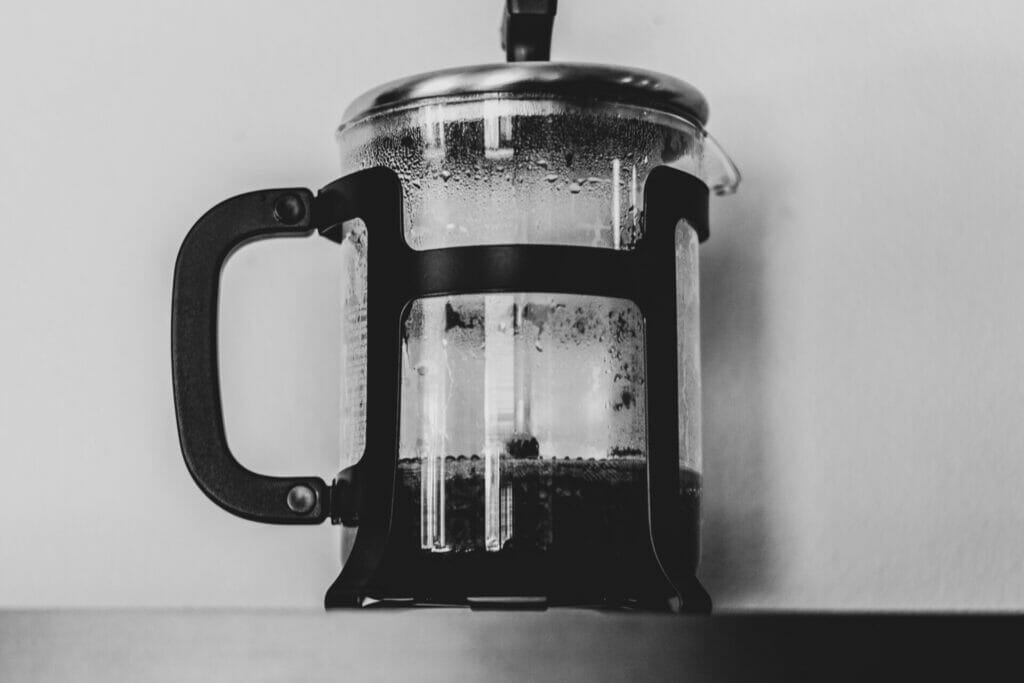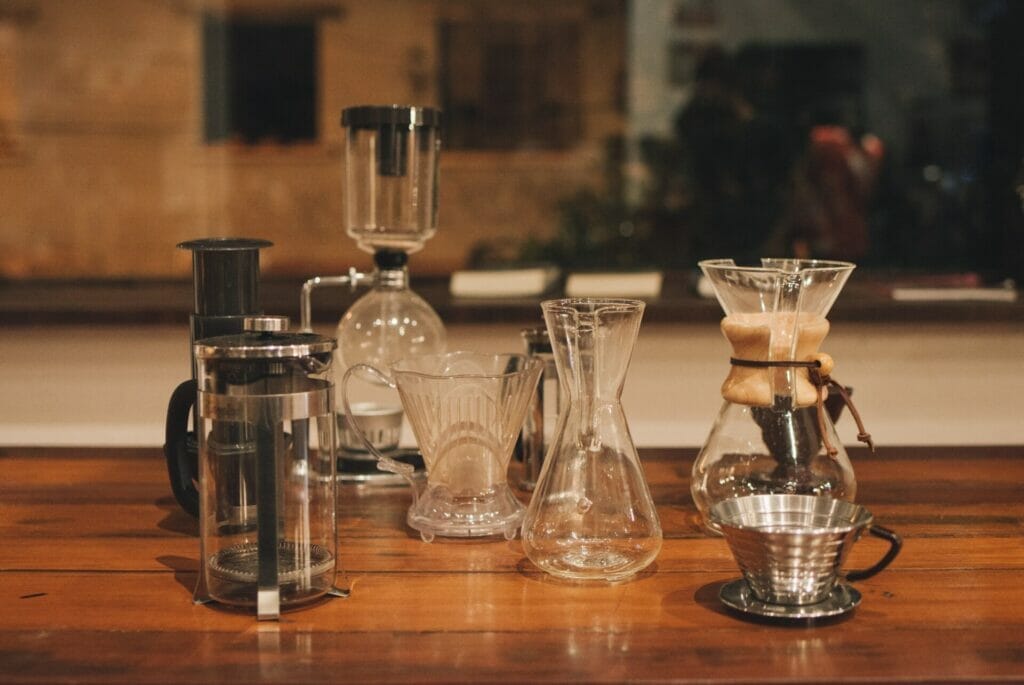How Long Do You Steep Coffee In A French Press?
When it comes to brewing the perfect cup of coffee with a French Press, there’s one key step that’s often overlooked: how long do you steep the beans?
For optimal flavor and strength, it’s recommended that you should steep your coffee in a French Press for approximately four minutes. The longer you brew your beans, the stronger and more full-bodied your coffee will be. However, if left for too long, it can become over-extracted and taste bitter.
By using coarsely ground medium roast and freshly boiled water, as well as following proper preparation instructions for best results – like preheating the carafe and staggering your pour between bloom and press – four minutes is generally thought to be an ideal steeping time.
With practice and precision, however, you can adjust timing according to what flavor profile you prefer. All in all, steeping time is key when crafting the perfect cup with a French Press!
What Happens If You Let A French Press Steep Too Long?
If you let a French press steep too long, the resulting cup of fresh coffee can be surprisingly strong and overly bitter. This is due to the fact that leaving the grounds in the water for a long time allows more oils to infuse and increases the flavor profile, which might become too strong.

In addition, when a French press steeping time is extended, it can cause over-extraction of ground dark-roasted coffee leaving you with a cup that’s been drained of its acidity and brightness.
The general consensus on ideal French press steeping time is between three and four minutes, depending on personal preference. Anything under two minutes will result in a weak brew whereas extending it beyond four minutes can lead to bitterness.
If you don’t have access to a timer, aim for four minutes and then check the espresso before pouring it out – if it’s too strong or bitter, simply mix it with some fresh hot water to dilute it slightly.
How Many Scoops Of Coffee Do You Put In A French Press?
Brewing the perfect cup of coffee in a French Press can be tricky. It depends on a number of variables, including the strength of your drip coffee machine and the size of the filter in your French press.

Generally, it’s recommended that you use 1-2 tablespoons of coarse ground coffee per 8 ounces (1 cup) of water. However, if you like a more intense flavor and stronger taste, up to 3 tablespoons is acceptable.
In terms of steeping time, the general rule for brewing with a French press is longer than most other methods. Most people agree that a minimum steep time of 4 minutes is ideal for getting the best out of your beans.
If you steep too quickly or don’t filter properly the coarse grounds may give off an unpleasant bitterness to your brew. Therefore, it’s very important to make sure you are steeping your beans long enough in order to get the most flavor out of them!
How Do You Steep Coffee In A French Press?
Brewing coffee solids in a French press is becoming increasingly popular due to its strong, full-bodied flavor and ease of use. To get the perfect cup of coffee, it’s important to know how long to steep coffee in the French press.
When making coffee brews using a French press, you’ll want to start by adding coarsely ground beans, then pouring hot water over the grounds. The mixture should steep for 4 minutes before being plunged. This will extract all of the robust flavors from your grains of coffee grounds and give you that delicious cup of coffee you’ve been wanting.

If you’d like a stronger cup of coffee with bolder flavors and more caffeine content, simply increase your steeping time up to 7 minutes before pressing down on the plunger. You can also adjust the number of grounds that you use depending on which type of roast or flavor profile you’re trying to achieve.
No matter how long you decide to steep your coffee in a French press, we guarantee that it’ll be a flavorful and satisfying cup every time!
FAQs
What Are The Components Of A French Press?
If you’re looking to make your own coffee with a French Press, it’s important to know the components of this press first. The typical parts of a French Press consist of a glass or plastic carafe, an insulated lid, a plunger, and a filter assembly.
The carafe is typically made from either glass or plastic and is where you will put a bit of coffee grounds and hot water. The lid is used to keep your coffee warm by insulating the liquid inside the carafe once the coffee has been brewed. As for the plunger and filter assembly, this component contains a spring-loaded plate that filters out any larger ground particles when pushing down on the plunger.
All these components together allow brewers to create their own cup of Joe quickly and easily – giving cafés across the world something worth waking up to each morning.
What Are The Advantages Of A French Press?
Using a French press is an easy and affordable way to make delicious grams of coffee. It’s simple, fast, and produces a consistent cup of java that is unmatched by many other methods. Plus, the French press method results in a cup of blue bottle coffee that contains none of the oils or sediment that often comes with an automatic drip coffee maker.

When brewing with a French press, you will be able to enjoy all the flavor and aroma of your favorite coffees. The French press helps preserve the natural taste and oils of your chosen bean as opposed to many other brewing methods which extract too much flavor. The result is a full-bodied cup with bolder flavors that you won’t get from any automatic machine.
Using a French press also offers convenience—no paper filters necessary! Measure out your desired amount of ground beans and add hot water straight into the container, let it steep for a few minutes, then plunge it and serve directly from the carafe. Clean-up is quick and painless since the grounds stay at the bottom while pouring out.
What Are The Various Types Of French Presses, And What Are Their Advantages And Disadvantages?
When it comes to French presses, there are a variety of types available on the market. Each type offers its own unique advantages and disadvantages worth considering.
The most popular type is the non-plunger French press, which features a cylinder-shaped device with a built-in filter at the base. This type of French press coffee prevents larger coffee grounds from entering your cup, allowing you to enjoy clear cups of coffee without any sediment. However, as these presses do not have plungers that push down into the beverage, they are not as quick as brewing coffee.

Another type is the stovetop French press, which has an upright pot often made out of metal or glass with a plunger at its top that pushes the powder-like coffee grounds down into your beverage.
This allows for a quick preparation period of time than those of other models since you can direct heat straight to the pot while brewing your potential coffee. The downside is that you need to be careful when handling hot liquids.
Finally, there is an electric French press that uses an automated system to plunge and dispense coffee into your cup; this makes it very convenient if you are in a hurry or simply prefer more hands-free operations!
However, these presses require electrical power in order for them to operate; for most people, this won’t be an issue but if you’re looking for a portable coffee maker, this might not be what you’re looking for.
